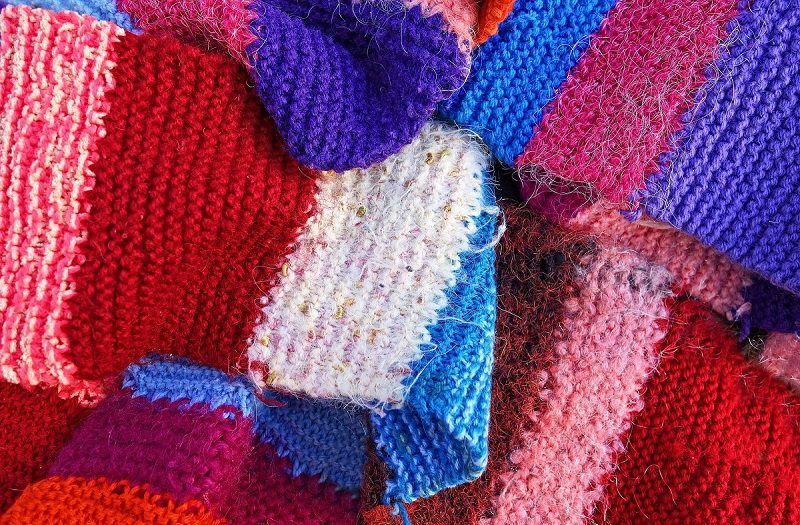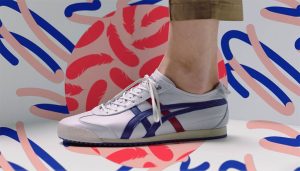
The Use of Recycled Materials For A Sustainable Fashion
In recent years, the fashion industry has seen incredible growth, specifically in fast fashion retail. Clothes are mass-produced to meet the desire for trendy clothing at affordable prices, and then quickly consumed by shoppers to maximize that season’s favorable look.
The rapid growth of fast fashion creates harmful purchasing habits and ultimately causes great environmental concern as it continues to deplete non-renewable resources at an alarmingly rapid pace with no pause in production. Which is exactly why sustainability in fashion should be discussed.
The Ellen MacArthur Foundation released a report that found the equivalent of one garbage truck of textiles is landfilled or incinerated every second of the day. The report also states that the fashion industry alone is on track to use up to a quarter of the world’s carbon budget by 2050. It may seem favorable to have trendy fashion at cheaper prices — but we must ask ourselves, what price are we willing to pay to harm our planet permanently? We must think of sustainability in fashion!
The linear “take – make – dispose of” model of clothing production is critically damaging to the environment, but many fashions and textile designers are completely transforming their supply chain to create more sustainable products and their business model.
Beyond being high performance, products made with sustainable materials are simultaneously working to reduce the negative environmental footprint while implementing a circular model for the fashion industry.
Designing with the end in mind
Sustainability in fashion is more than a movement. It’s a solution. It focuses on every stage of a product’s life, from supply chain and production to retail and purchasing, and of course, a product’s inevitable end.
Even in the inception of the design, simply thinking about a product’s ability to be reused at the end of its life is sustainable. A brand choosing to design with raw materials can define up to fifty percent of its environmental footprint. It’s vital for these fashion brands to consider innovative methods for sourcing waste and recycled materials.
Through innovative recycling technology, my company Aquafil manufactures ECONYL® regenerated nylon. ECONYL® nylon is a sustainable material made out of the waste that’s been rescued from landfills and oceans around the world. It performs exactly the same as brand new nylon and can be recycled, recreated and remolded again and again. Using our regenerated nylon reduces the global warming impact of nylon by up to eighty percent compared with material generated from oil.
Designers tap into ECONYL® to produce a wide range of textile products such as sportswear, swimwear, bags, eyewear, and carpets. Our mission is to inspire conversations within the fashion industry to redefine how designers select, source and design with regenerated materials. Designing with the end in mind and creating a circular fashion industry are synergistic forces.
Today, it’s key to produce products that in a few years will be able to be recycled more easily. Actively turning waste into fibers and using recycled materials in fashion enables both designers and consumers to interact with waste as an abundant resource, rather than continuing to exhaust the earth’s finite resources.
With significant earth-friendly textile developments like ECONYL® regenerated nylon, designers have the option to create styles using recycled materials over and over again without having to tap into new resources.
More about Sustainability in Fashion
Consumers Demand Sustainable Fashion – But Won’t Pay More For It
What is ethical or sustainable fashion?
Institute of Positive Fashion’s Waste Ecosystem Project To Boost Sustainability In Fashion
The Industry Taking Action
Members of the fashion industry have already started working together to create a new generation of fashion, where innovative style and sustainability exist side-by-side.
Yesterday’s waste can be regenerated into this season’s couture, and then regenerated again into next year’s most popular sneaker. The possibilities for all types of sustainable fashion products are endless when sourcing renewable materials.
Patagonia is a leader in producing quality products made with the end in mind. Their products have reduced negative environmental impacts and helped shift industry and consumer attitudes toward creating with recycled materials such as recycled nylon, hemp, organic cotton, and other recyclable textiles.
In 1994, Patagonia stood against chemically intensive cotton and chose to exclusively create with organic cotton, certified by the Global Organic Textile Standard. They’ve also worked to lessen the harsh impact of the wool industry by recycling.
Recycling wool completely eradicates the harmful dyeing process, which automatically eliminates the demand for energy, water, and chemicals, resulting in no wastewater.
Patagonia has consciously decided to implement eco-friendly technologies and create with recycled materials that can be transformed into long-lasting, durable products, without causing harm to the environment.
Prada recently launched a pioneering new project called Prada Re-Nylon. The sustainable line of iconic Prada bag silhouettes has been executed with ECONYL® regenerated nylon.
Through the recycling and purification process of plastic waste, Prada is choosing to use waste materials that would otherwise pollute the world’s landfills and oceans.
Mara Hoffman creates high-quality designer clothing, built to last and created with the planet in mind. The entire clothing line taps into a range of environmentally-conscious resources from organic cotton, hemp, and linen to recycled fabrics and fibers.
Mara Hoffman also implemented compostable packaging and branding to even further lessen the brand’s environmental footprint.
Endless Creative Possibilities
There are grave environmental concerns surrounding products that are made with non-renewable resources, as their ultimate fate is landfill disposal, incineration, or ocean pollution.
As brands and fashion designers start adopting a circular approach to product design, it will be easier to pinpoint where waste can be reduced and which waste sources can be recycled or regenerated.
Brands and designers using recycled waste as an abundant resource continue to deliver beautiful, high-performance products. Their individual contributions and collaborations help to propel the fashion industry on a path toward a healthier planet and more sustainable future.
Sustainable fashion is about paying attention to a product’s entire life cycle and rethinking how things are made. With experience in the textile industry for over 32 years, I see this as an opportunity for brands and designers to consciously innovate, reinvent, and materialize sustainability through the power of fashion.
ECONYL® is redefining how the design industry is selecting, sourcing, and designing with regenerated materials.
Giulio Bonazzi is the chairman and CEO of Aquafil SpA and passionate about bringing the circular economy into the mainstream. An innovator and disruptor, Bonazzi is transforming his family-run manufacturing business into a sustainable global enterprise by turning trash from landfill and oceans into high-quality, beautiful fibers. He is also a participating FASHINNOVATOR.
Read More:
Stella mcCartney leaves LVMH fabc

fashionabc is a fashion technology platform, comprising a digital directory and various other digital tools and supply chain solutions for the fashion industry ecosystem, that focus on ethical fashion and sustainability. We are building inclusive digital transformation tools for fashion professionals who are willing to take steps towards a more sustainable ethical fashion industry, by adopting AI and DLT blockchain technology.
* building digital profile and IP solutions for fashion businesses
* tackle issues such as provenance and counterfeit in supply chain
* contribute to the construction of a meritocratic ethical fashion industry which is certified and part of the circular economy










